Why Should You Choose Enclosed Car Hauler Services for Your Vehicle
When transporting a valuable or prized vehicle, the choice of service is crucial. Enclosed car hauler services stand out as the preferred option for many car owners, offering unparalleled protection, security, and personalized care. Unlike open trailers, enclosed car haulers provide a fully enclosed, weatherproof environment, shielding your car from external elements during transit. This article delves into the unique selling points of these services, highlighting why they are the ideal choice for transporting high-end, classic, or luxury vehicles.
1. Superior Protection from Weather Conditions
One of the primary advantages of using these services is the protection they offer against harsh weather conditions. Whether you’re transporting your car across the country or to a local destination, the elements can pose a significant risk to your vehicle’s exterior. Rain, snow, hail, and intense sun exposure can cause damage to the paint job, tires, and other vulnerable parts of your vehicle. Enclosed trailers completely shield your car from such weather, providing peace of mind knowing that your vehicle is safe from the potential damage that can be caused by extreme temperatures, rain, or flying debris.
2. Enhanced Security for Your Vehicle
When you choose an enclosed car hauler service, security becomes a top priority. Unlike open car carriers, which expose your vehicle to public view and increase the risk of theft or vandalism, enclosed haulers offer a private, secure transport environment. The vehicle is locked inside the trailer, reducing the likelihood of anyone tampering with it. Additionally, many enclosed car haulers use advanced tracking systems, so both you and the service provider can monitor your vehicle’s location throughout the journey, ensuring its safety at all times.
3. Ideal for High-Value and Luxury Cars
Enclosed car haulers are an excellent option for transporting high-value, luxury, or classic vehicles. These vehicles often require specialized care and attention during transit, as they can be significantly more sensitive to external factors like weather or physical damage. With enclosed transport, your luxury car is given the care it deserves, and the transport company can use extra precautions, such as custom cradles, straps, and tie-downs, to ensure the vehicle is securely transported. Whether you’re moving a rare sports car, a vintage model, or a luxury sedan, an enclosed car hauler ensures that your car arrives at its destination in pristine condition.
4. Protection Against Road Debris and Dust
Road debris, dirt, and dust can wreak havoc on a vehicle during transit, especially on long journeys. Exposed cars are particularly susceptible to damage caused by rocks, gravel, and even tire debris that might be kicked up by other vehicles. With an enclosed car hauler, your vehicle is fully protected from such hazards. This is especially important when transporting cars over long distances or in regions where roads may not be in the best condition. Enclosed haulers provide a barrier that ensures your car remains clean and free from road debris, minimizing the need for cleaning and potential repairs upon arrival.
5. Better for Short and Long-Distance Travel
Whether you’re transporting a vehicle across a short distance or for a long-haul journey, enclosed car haulers are versatile and reliable. For short-distance transport, they offer enhanced protection. At the same time, long-distance travel provides the added benefit of safeguarding your vehicle against various road conditions, weather, and other external elements. Many car owners opt for enclosed transport for cross-country moves, knowing that their car will remain protected throughout the entire journey. The flexibility and adaptability of enclosed car haulers make them a popular choice for both short and long-distance vehicle transportation needs, ensuring that your specific needs are catered to.
6. Specialized Handling and Professional Services
Enclosed car hauler services often employ professional drivers and handlers who are trained to care for and transport vehicles with the utmost precision and care. Unlike standard transport options, enclosed carriers are operated by experts who understand how to load, transport, and unload a vehicle securely. Whether it involves handling delicate sports cars or high-end luxury models, these professionals are skilled in the specialized techniques required to ensure a safe and smooth journey for your vehicle. This level of expertise contributes to a higher level of service, making enclosed car haulers the go-to choice for discerning car owners.
7. Customizable Options for Vehicle Transport
Another advantage of these services is the ability to offer customizable options for vehicle transport. Whether you need to transport one car or multiple vehicles, enclosed haulers can accommodate your specific needs. Some companies offer options for single-car enclosed trailers, while others provide larger haulers that can fit multiple vehicles. Additionally, some services allow you to select specific transport dates or offer expedited delivery for those on a tighter schedule. The level of customization available in terms of timing, trailer size, and special services makes enclosed car haulers a flexible and tailored choice for every vehicle owner.
8. Peace of Mind with Comprehensive Insurance
These services typically provide comprehensive insurance coverage for your vehicle during transit, adding another layer of peace of mind. Since vehicles transported in enclosed carriers are protected from various risks, including theft, damage, and accidents, many companies offer robust insurance plans that cover any unexpected incidents. Even though enclosed car haulers significantly reduce the risk of damage, the added benefit of insurance ensures that you’re financially protected in the unlikely event that something goes wrong. This level of security and assurance, coupled with comprehensive insurance coverage, makes enclosed transport an attractive option for those transporting high-value or classic cars, providing you with the peace of mind you need during the entire journey.
Enclosed car hauler services provide a superior level of protection, security, and care when transporting your vehicle. Whether you are moving a high-end sports car, a vintage model, or a luxury sedan, choosing an enclosed trailer ensures your vehicle is shielded from harsh weather, road debris, and theft. The specialized handling, professional services, and customizable options offered by these carriers make them the ideal choice for those who want to ensure their vehicle arrives at its destination in the best possible condition.
If you are planning to transport your vehicle, call our experienced professionals at High-End Transport at (305) 816-2255.














